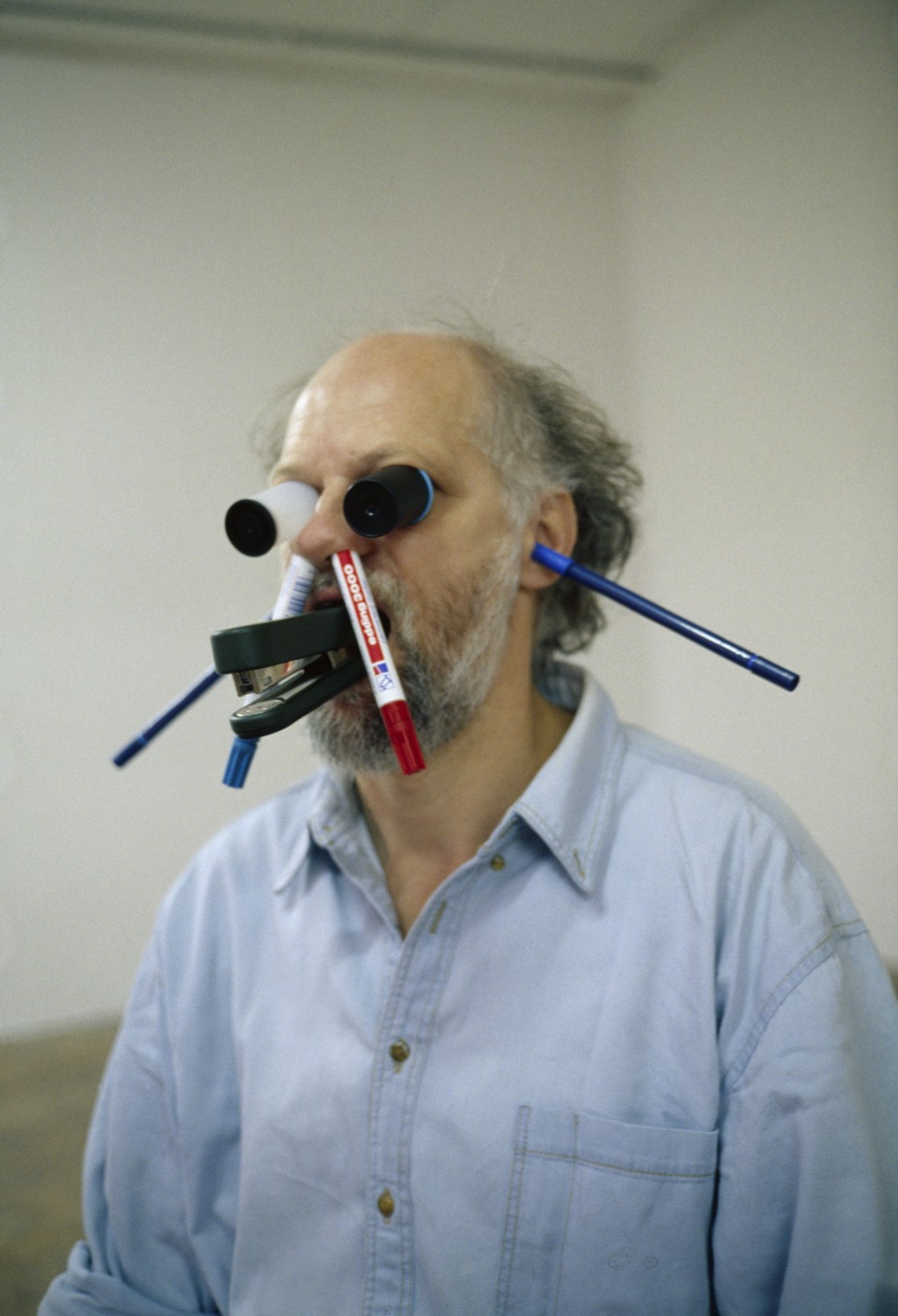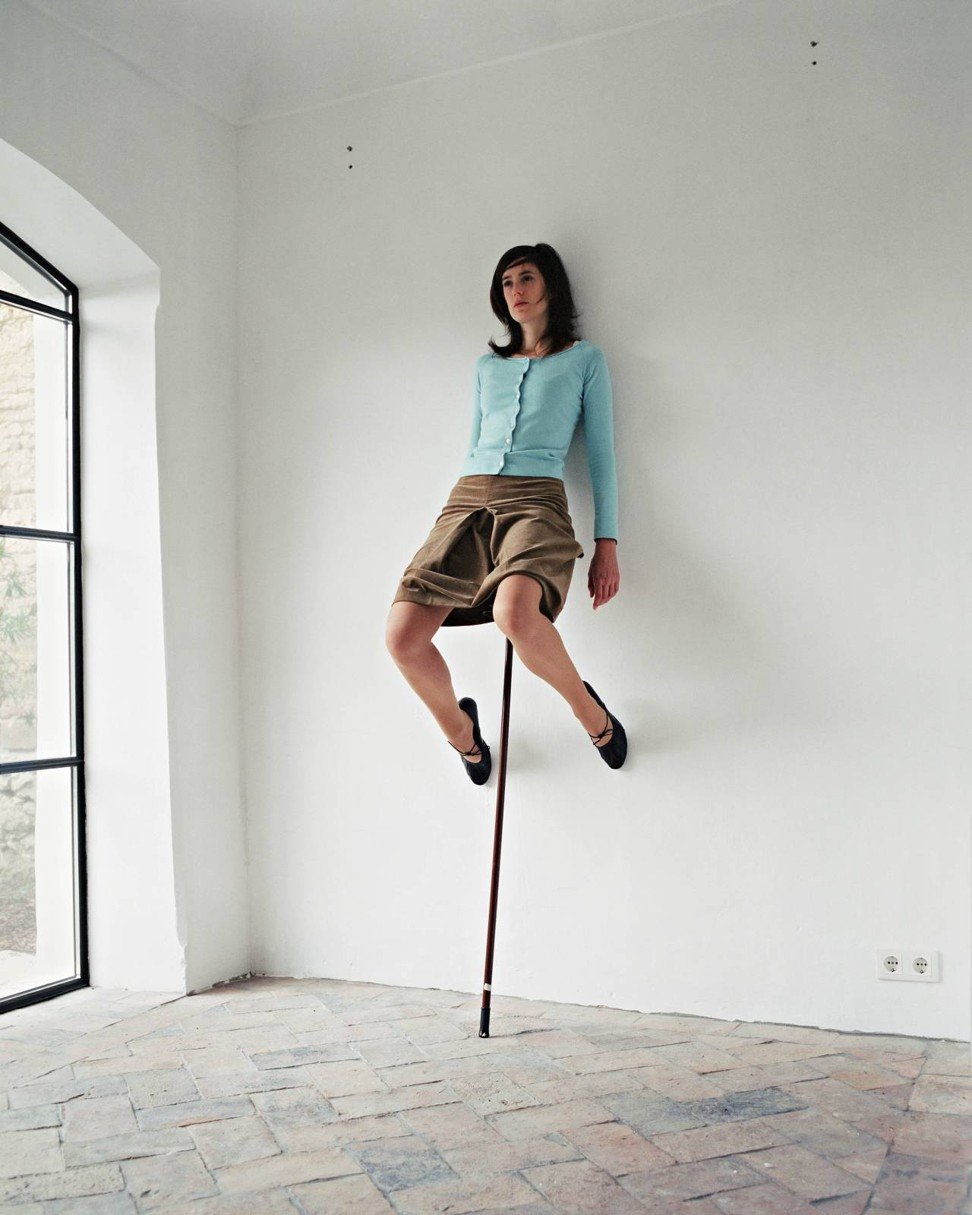
Buy a hot dog and become an artwork at Austrian artist’s interactive art project at K11 Musea in Hong Kong
- A bright yellow distorted Volkswagen, built by artist Erwin Wurm, will be selling hot dogs in Tsim Sha Tsui for a month
- Wurm talks about his works, influencing the Red Hot Chili Peppers, and how skinny he is

In 2012, Hong Kong’s transport fans mourned the passing of its old, non air-conditioned double-deckers, popularly known as “hot dog” buses. This week, however, a hot dog bus has appeared in front of Tsim Sha Tsui’s K11 Musea. +
It’s bright yellow, it’s a Volkswagen and it has one class of fare: hot dogs.
It’s an artwork by the Austrian artist Erwin Wurm. Last summer, Hot Dog Bus spent its weekends feeding the 50,000 in Brooklyn Bridge Park. It will now do the same for Hongkongers.
Wurm, 65, a slender, handsome man, shivers in K11’s air conditioning. Twice within half an hour he refers, unprompted, to his size. “I was always slim,” he says at one point; and later (of the need for assistants’ help to create large works in his 12th-century Schloss outside Vienna), “I was always skinny and not very muscular”.

His shape is relevant because Hot Dog Bus is part of Wurm’s ongoing fascination with distortion. Volkswagen began manufacturing the Microbus in the 1950s; with the help of polystyrene and putty, Wurm’s version has grotesque late-middle-aged spread. The hot dogs it serves are intended to add similar layers to humans. It’s an interactive performance: you, bloating as you gorge on calories, also become a sculpture.
“I speak a lot about social issues,” he says, as he explains the (not entirely obvious) greater relevance. “Being slim and looking young is a big question these days.” In which case, why feed free hot dogs to already obese Americans? “They stepped into the trap,” he says. Isn’t that cruel? His face lights up: “A bit.”

For such a courteous individual, that streak of professional sadism has a long history. A few years ago, The Guardian asked him to choose the best photograph he’d taken: it was a 1997 shot of a German museum director with pens in his nose and ears, film canisters screwed into each eye and a stapler shoved in his mouth.
Those were the early days of his One Minute Sculpture series, for which he’s probably best known. In fleeting encounters, members of the public do daft things – wear a chair, lie on oranges, stick their head into a cabinet – according to the artist’s specific instructions. “There’s no free will,” he says. “But it’s all voluntary. I don’t want to make bad comedy about people.”
If such absurdity rings a musical bell, you’re probably one of the 128 million people who’ve watched the Red Hot Chili Peppers’ 2002 video Can’t Stop on YouTube: its random use of buckets, body parts and clothing was inspired by Wurm. “To my knowledge I was one of the first artists credited on MTV,” he says. “Everyone stole from artists.”
The One Minute Sculpture series – seen in London’s Tate Modern, the Pompidou Centre in Paris and New York’s Museum of Modern Art, among others – is still part of his life, although he turns down many invitations. “I’m very strict, knowing it’s close to the banal. This is my treasure and I deal with it in a smart way.”
He’s just been to Milan for an American Vogue shoot (“Models are more picky and complicated”) and last year, the series inspired his first tattoo. He rolls up the sleeve of this left forearm to display the words ‘one minute forever’.
He had it done after a “surreal” hospital experience, triggered by asthma. Although he’s been working with skeletons in recent years, a suggestion that the tattoo might be a response to near-death genuinely surprises him.

The surreal nature of his work already being considerable, any additional effect may not be apparent. He’s also wary of direct autobiography; as he used to tell his students, Louise Bourgeois (the French artist who made a stellar career out of childhood trauma) can get away with it, but for most, “it’s a story about your grandfather and everyone’s bored”.
He, briefly, mentions his own grandfather in connection with his sausage mania. “I’m really addicted as a boy.” He grew up in post-war Austria, “very strict, many Nazis but not called Nazis”, in an art-free house built by his parents. His father was a policeman. In Wurm’s work, there’s a suggestion of breathlessness – not from asthma but a stultified society.
Maybe that’s why he yearns to distort the domestic. A list of his sculptures – Narrow House, Fat Convertible, The Artist Who Swallowed the World – suggests dark ridicule. Next week, he has an exhibition opening in Salzburg called Home Sweet Home. Asked what it’s about, he replies, “The tragedy of daily life.”
Still, for a man who began with dust sculptures because that was the only material he could afford, he hasn’t done too badly. He has said he likes to “poke fun at our need for big, shiny toys” so you have to wonder why his work is at K11 Musea, which describes itself as “the world’s first cultural-retail destination” (though its inflated opulence is, indeed, breathtaking).
Wurm says it’s not about the space, it’s about being part of an art collection he likes: Hot Dog Bus is owned by Adrian Cheng Chi-kong, executive vice-chairman of New World Development, whose vision is to make K11 Musea “a Silicon Valley of culture”.
Cultural-retail, it turns out, means that the hot dogs – free in Brooklyn – come at a price: HK$68. (They’re made by The Butchers Club.) Anyone of slender means can always try the food trucks at the Hong Kong Cultural Centre.
Hot Dog Bus will be outside K11 Musea until October 27. Hot dogs are sold from 12pm to 7pm daily.